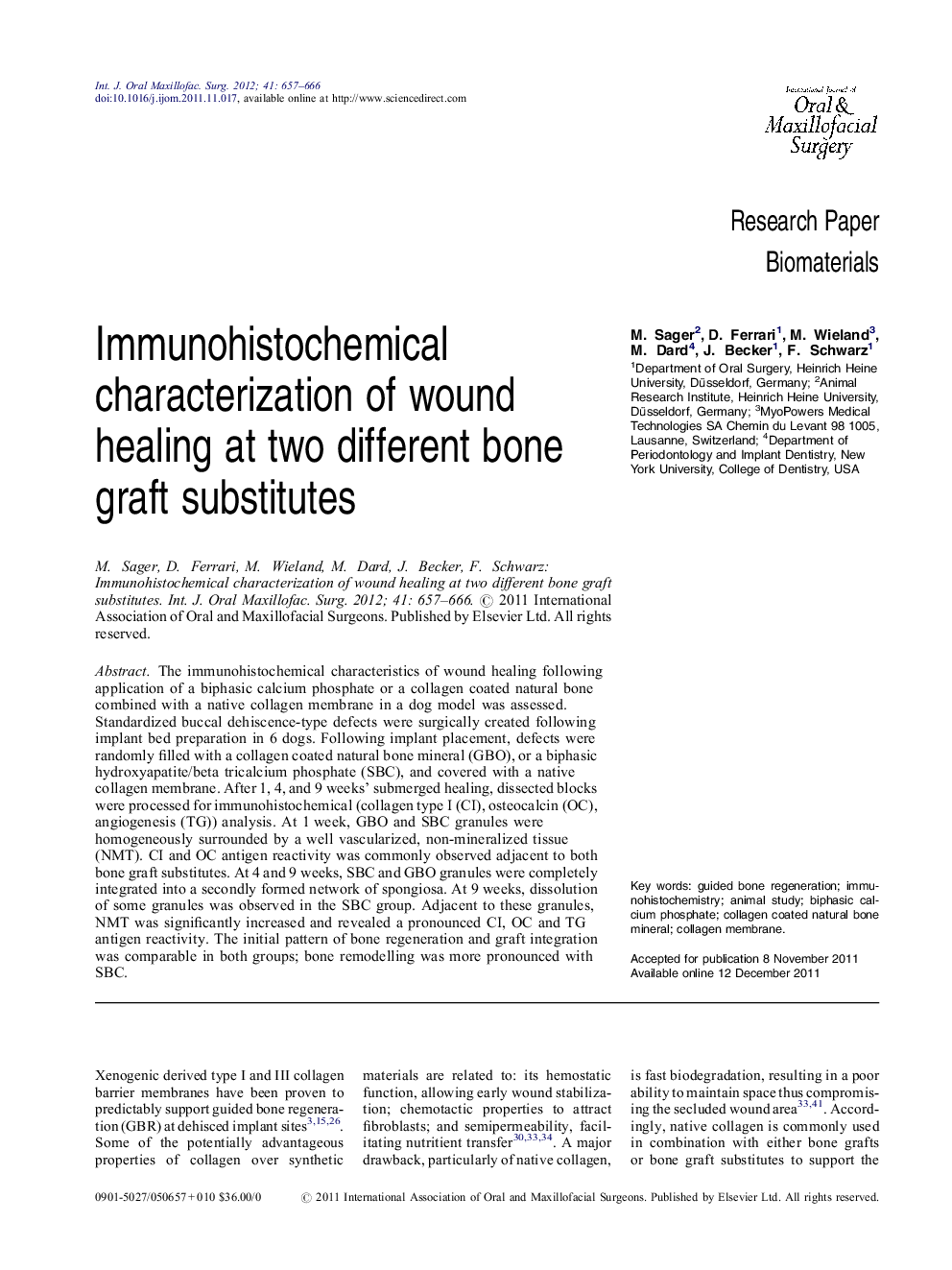| Article ID | Journal | Published Year | Pages | File Type |
|---|---|---|---|---|
| 3133365 | International Journal of Oral and Maxillofacial Surgery | 2012 | 10 Pages |
The immunohistochemical characteristics of wound healing following application of a biphasic calcium phosphate or a collagen coated natural bone combined with a native collagen membrane in a dog model was assessed. Standardized buccal dehiscence-type defects were surgically created following implant bed preparation in 6 dogs. Following implant placement, defects were randomly filled with a collagen coated natural bone mineral (GBO), or a biphasic hydroxyapatite/beta tricalcium phosphate (SBC), and covered with a native collagen membrane. After 1, 4, and 9 weeks’ submerged healing, dissected blocks were processed for immunohistochemical (collagen type I (CI), osteocalcin (OC), angiogenesis (TG)) analysis. At 1 week, GBO and SBC granules were homogeneously surrounded by a well vascularized, non-mineralized tissue (NMT). CI and OC antigen reactivity was commonly observed adjacent to both bone graft substitutes. At 4 and 9 weeks, SBC and GBO granules were completely integrated into a secondly formed network of spongiosa. At 9 weeks, dissolution of some granules was observed in the SBC group. Adjacent to these granules, NMT was significantly increased and revealed a pronounced CI, OC and TG antigen reactivity. The initial pattern of bone regeneration and graft integration was comparable in both groups; bone remodelling was more pronounced with SBC.
